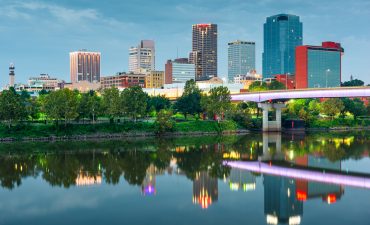Photography is a passion shared by professionals and amateurs alike. With the advent of modern digital technology, it has become extremely simple to click, store, send and print the pictures. Photographs are an excellent way of storing your memories. Traditional Cameras use the varying light intensities to save the image on photographic film. While digital cameras convert the image into digital signals that are stored on a hard disk inside the digital camera.
How do they work?
The first camera was ‘camera obscura’ the design of which represented a chamber like structure. With technological improvement we have digital cameras, but the basic function of the camera remains the same. A camera is basically a light proof box covering the chemical (film), mechanical (the click and flash mechanism) and the optical (lens) elements.
A camera works on the principle of reflection. Different intensities of light are captured inside the camera. The lens converge the light rays coming from a wide frame (the area that gets clicked) into the film. The film has light sensitive materials (silver halides) that capture and stores the light information thus recording the image. When the film is later developed in the dark rooms, the actual image comes out.
Along with the chemical element of the camera there is the necessary mechanical part which constitutes the aperture control, the diaphragm and the shutter.
Aperture control
Similar to the human eyes, the cameras too have aperture controls, which can also be controlled manually or automatically. This allows a certain amount of light to fall on the lens. More appropriately it regulates the dimensions of the area that is to be captured.
Diaphragm
Diaphragm regulates the amount of light entering the camera.
Shutter
To click an image you have to allow light through the shutter. Once the shutter is open the camera gets active. The time period for which the shutter is open determines the amount of light reaching the sensor. Shutter is useful in controlling the picture quality and blur effects in some images.
Digital cameras
Unlike normal analog cameras that use films, digital cameras use digital signals to store the image. You can view, store, delete and reproduce digital images. Similar to light sensitive films, digital cameras have sensory plates that recognize the light signal and store the digital information. The plate is divided into pixels, which are the image sensor points. The cameras that can capture images with greater pixel strength are considered to provide sharper and better pictures. The digital cameras also use filters for white balance control, red eye
correction and various other effects.
The digital information is stored in ‘bits’ on a memory chip (card)
Advantages of digital cameras
• A large number of photos can be taken
• Better adjustment of the focal length can be done
• The image can be previewed before clicking
• You also have the option to capture videos
When you think about buying a camera, enquire about its resolution, sensor size, focal range, ISO range, the shutter speed, the aperture range, the battery used and the storage media. Last but not the least look for the price in which it comes.







*sarcasm* Now you see, this is VERY complicated, escileaply for you. It took me months to figure this one out! You see, there is a dial on the top of the camera, next to the button you use to take photos. Now on that dial, you will see many icons. You see the icon that looks like a video cam? The one below SCN? Turn the dial so the black line next to the dial is facing the cideo camera icon. Then press the big silver button and record! *sarcasm* once again it took me MONTHS to figure this out